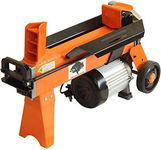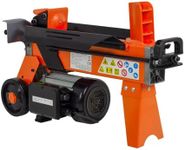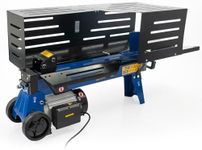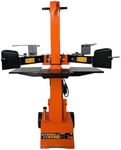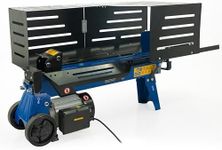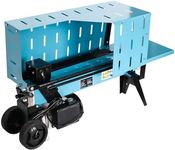Buying Guide for the Best Hydraulic Log Splitters
Choosing the right hydraulic log splitter can make your wood splitting tasks much easier and more efficient. When selecting a log splitter, it's important to consider several key specifications to ensure you get a model that fits your needs. Understanding these specs will help you make an informed decision and find the best hydraulic log splitter for your specific requirements.TonnageTonnage refers to the splitting force of the log splitter, measured in tons. This spec is crucial because it determines the size and hardness of the logs you can split. Lower tonnage (around 5-10 tons) is suitable for small, softwood logs, while higher tonnage (20-30 tons or more) is needed for larger, hardwood logs. To pick the right tonnage, consider the type and size of wood you will be splitting most often.
Cycle TimeCycle time is the amount of time it takes for the log splitter to complete a full splitting cycle, including extending and retracting the ram. This spec is important because it affects how quickly you can split logs. Faster cycle times (10-15 seconds) are ideal for high-volume splitting, while slower cycle times (20-30 seconds) may be sufficient for occasional use. Choose a cycle time based on how much wood you need to split and how quickly you want to get the job done.
Log CapacityLog capacity refers to the maximum length and diameter of logs that the splitter can handle. This spec is important because it determines the size of logs you can split without having to cut them down further. Typical log splitters can handle logs up to 24 inches in length and 12 inches in diameter, but some models can accommodate larger logs. Consider the size of the logs you will be working with and choose a log splitter with a suitable capacity.
Power SourceHydraulic log splitters can be powered by gas engines, electric motors, or tractor PTOs. The power source affects the splitter's portability, noise level, and maintenance requirements. Gas-powered splitters are more powerful and portable but can be noisy and require more maintenance. Electric splitters are quieter and easier to maintain but may be less powerful and require access to an electrical outlet. Tractor PTO-powered splitters are ideal for those who already own a tractor. Choose a power source based on your power needs, noise tolerance, and available resources.
OrientationLog splitters can be either horizontal or vertical in orientation. Horizontal splitters are more common and are suitable for splitting smaller logs that can be easily lifted onto the splitter. Vertical splitters are better for larger, heavier logs that are difficult to lift, as you can roll the log into place. Some models offer both orientations for added versatility. Consider the size and weight of the logs you will be splitting and choose an orientation that makes the process easier for you.
PortabilityPortability refers to how easy it is to move the log splitter around. This spec is important if you need to transport the splitter to different locations or store it when not in use. Features like wheels, handles, and tow hitches can enhance portability. Smaller, lighter models are easier to move, while larger, heavier models may require more effort or equipment to transport. Consider how often you will need to move the splitter and choose a model with the appropriate portability features.
